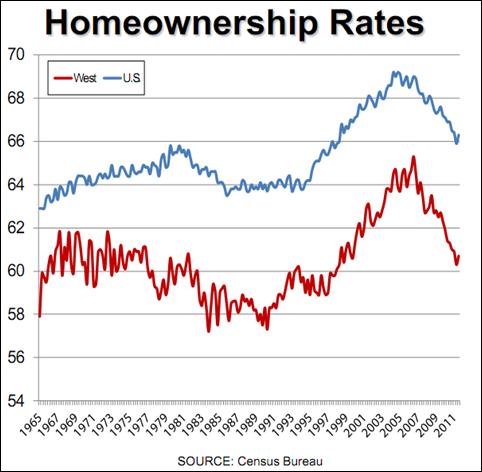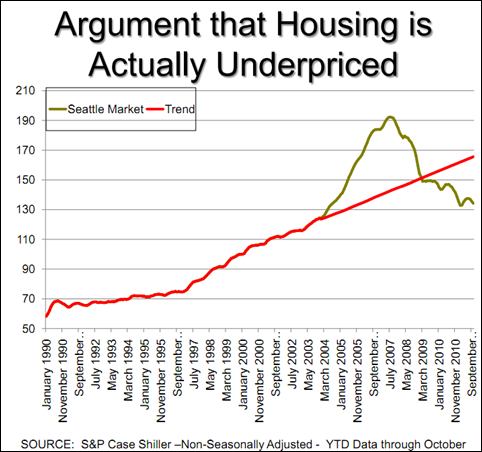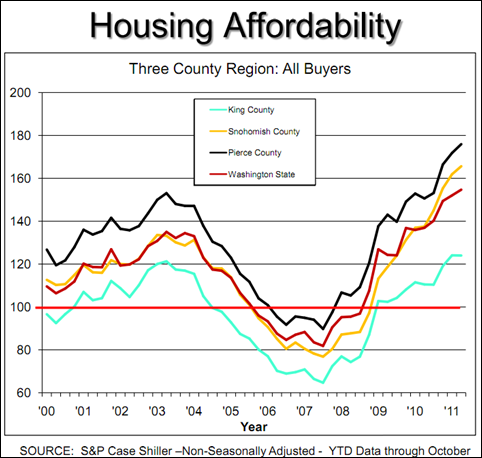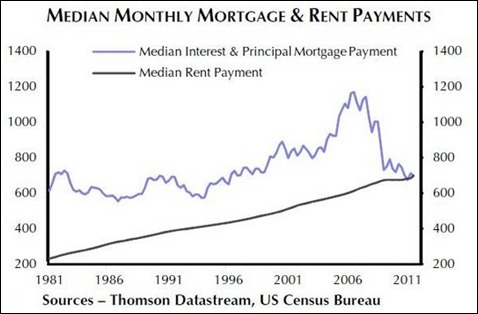 A friend recently asked me for mortgage advice. I explained how to shop around for a good rate, and then I added my catchphrase: “You didn’t ask, but…”
A friend recently asked me for mortgage advice. I explained how to shop around for a good rate, and then I added my catchphrase: “You didn’t ask, but…”
Like anyone involved in the world of finance, I’ve seen a lot of serious mortgage trouble in the last few years. Even though the days of jumbo loans with no proof of income are long gone, it’s still a homebuyer’s responsibility to make sure that taking on a mortgage doesn’t put them in the financial danger zone.
So, I told my friend, before making the leap, to work through the following checklist and make sure you’re on the good side of each rule.
Now, nobody’s perfect, and if your online dating profile says you’re looking for a financially prudent partner who fulfills every qualification below, you’ll stay lonely. “You obviously can’t do all the things on your list,” says Jane Hodges, author of Rent vs. Own.
But whenever someone has come to me in danger of losing their house, they’ve ignored nearly every single rule, including the most important one: In Mint’s recent money mistakes survey, 20% of you admitted to spending more than 30% of your income on housing.
And since January is all about fixing those pesky Money Boo Boos, and paying too much for housing is definitely a big money mistake, let’s talk about the ten commandments of home buying:
1. Don’t bite off more mortgage than you can chew
The classic lending guideline says your principal, interest, property tax, and insurance (PITI) should amount to no more than 28% of your gross income.
Obviously, that’s an arbitrary number. Your financial world won’t explode if you stretch to 29% or 33%.
But an outsized mortgage payment is going to bite you sooner or later. As we’ve seen again and again over the last four years, lenders aren’t cuddly and understanding. They just want you to make your payments, month after month.
There’s also the duration of the mortgage to consider. “Another metric is your age,” says Hodges. “If you’re 55 and a first-time buyer, you better be getting a 15-year loan, right?”
2. Have at least one steady income in the family
It’s not 2006 anymore, and banks are a lot more scrupulous about checking to see if you have any income before shoveling a houseload of money in your direction.
But it’s still your responsibility to make sure you have a steady paycheck to go with your steady mortgage payment.
3. Carry few or no other debts
A reasonably sized mortgage quickly becomes an unreasonable burden when you mix it with student loans, car loans, and credit card debt.
The traditional lending guideline says that your mortgage payment (yes, including interest, tax, and insurance) and all your other debts should add up to 36% of your income or less.
Again, I’ve had people show me their monthly budget, and 70% of their income was going to debt repayment. That can’t end well.
4. Keep a big buffer
On top of debt repayment, you have other non-negotiable bills every month: utilities, insurance, a basic level of food and clothing, and maybe a tuition payment. Then there are discretionary expenses: saving, dining out, entertainment, travel, etc.
In their book, All Your Worth, Elizabeth Warren and Amelia Warren Tyagi recommend that you keep your non-discretionary expenses to less than 50% of your take-home income.
Like the other percentages we’ve been throwing around, this one isn’t magic, but it’s a nice guideline. When too much of your income gets sucked into required expenses, you lose flexibility.
A brief period of unemployment, a medical emergency, or a car repair can turn into a financial disaster that ultimately costs you your house.
5. Have an emergency fund
If you have a well-stocked emergency fund now, don’t drain it to fund a down payment. If you don’t have one, you’re not ready for a mortgage, no matter how perfect a Cape Cod you just toured.
6. Have good life, disability, and health insurance
If you’re uninsured or underinsured, you’re in no position to buy a house, unless you’re sitting on a giant pile of money. Are you?
7. Bring a 20% down payment
Small down payments lead to big problems. Reuters’ Felix Salmon crunched the numbers last year and found that mortgages with a 15%-20% down payment were more than twice as likely to become delinquent as mortgages with a 20% down payment for most years before the financial crisis.
Lower down payments did much worse. His conclusion: “So, let’s all remember this chart the next time anybody claims that you can have a safe mortgage with a low down payment. Because the fact is that you can’t.”
8. Don’t use home equity as part of your retirement plan
Home equity is great—that’s why you should bring a big down payment. But it’s also undiversified, subject to the ups and downs of the real estate market, and hard to quickly turn into cash.
It’s fine to have your retirement savings plan reflect the fact that your mortgage will be paid off in retirement and your ongoing housing costs will be low (although, you’ll still be on the hook for maintenance, property tax, and insurance).
If you’re assuming your house will appreciate at a lavish rate and you’ll be able to cash out later when you downsize, think again: over the long term, house prices rise at about the rate of inflation, according to the Case-Shiller index.
9. Be prepared to settle down
Unless you’re prepared to stay in your house for seven to ten years, the costs of buying and selling are likely to swamp any price appreciation.
Put more simply: If you move a lot, you’re better off renting. And most people underestimate how soon they’ll want to (or need to) move. Look at your past behavior and be realistic.
10. Check the price-rent ratio for signs of a bubble
A couple of times a year, Trulia.com looks at housing markets nationwide and declares them under-, over-, or well-priced based on the historical price-rent ratio, which is just the price of a house divided by the annual rent for an equivalent house.
During the housing bubble, prices in many markets rose to absurd levels by this standard: People were buying $500,000 houses that would have rented for, say, $20,000/year.
In retrospect, this obviously wasn’t going to work out. Prices in most markets are now sane (ratio of 15 or less), but you should still look at the neighborhood level. My Seattle neighborhood, for example, is still looking a little hot.
Source: Matthew Amster-Burton via: Mint.com









